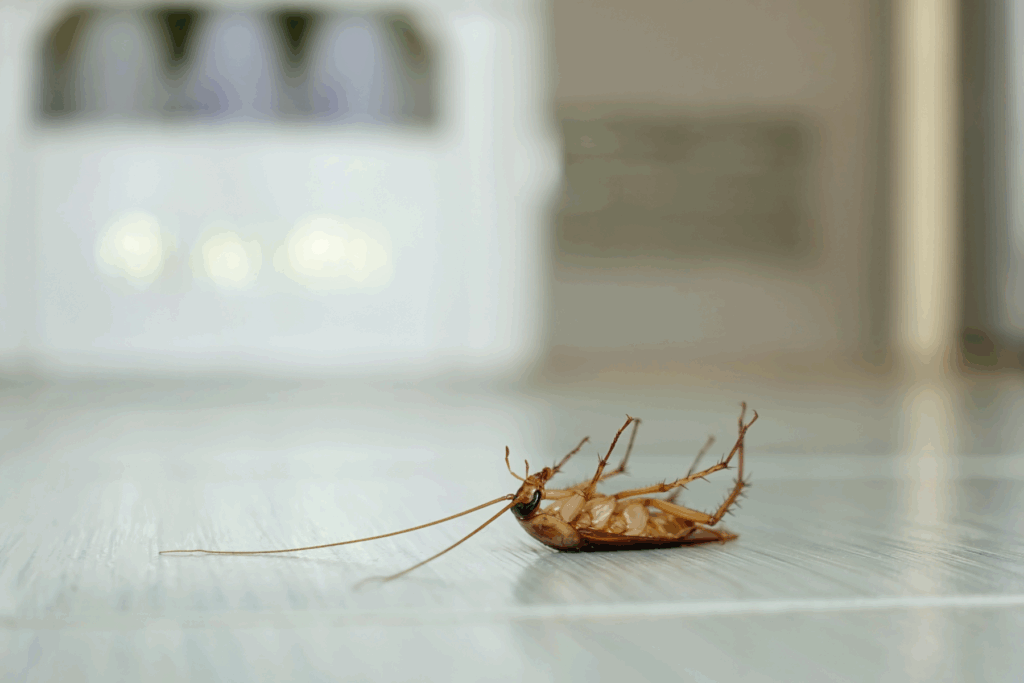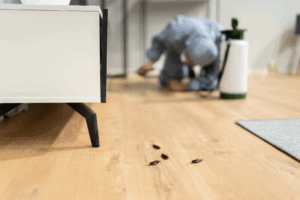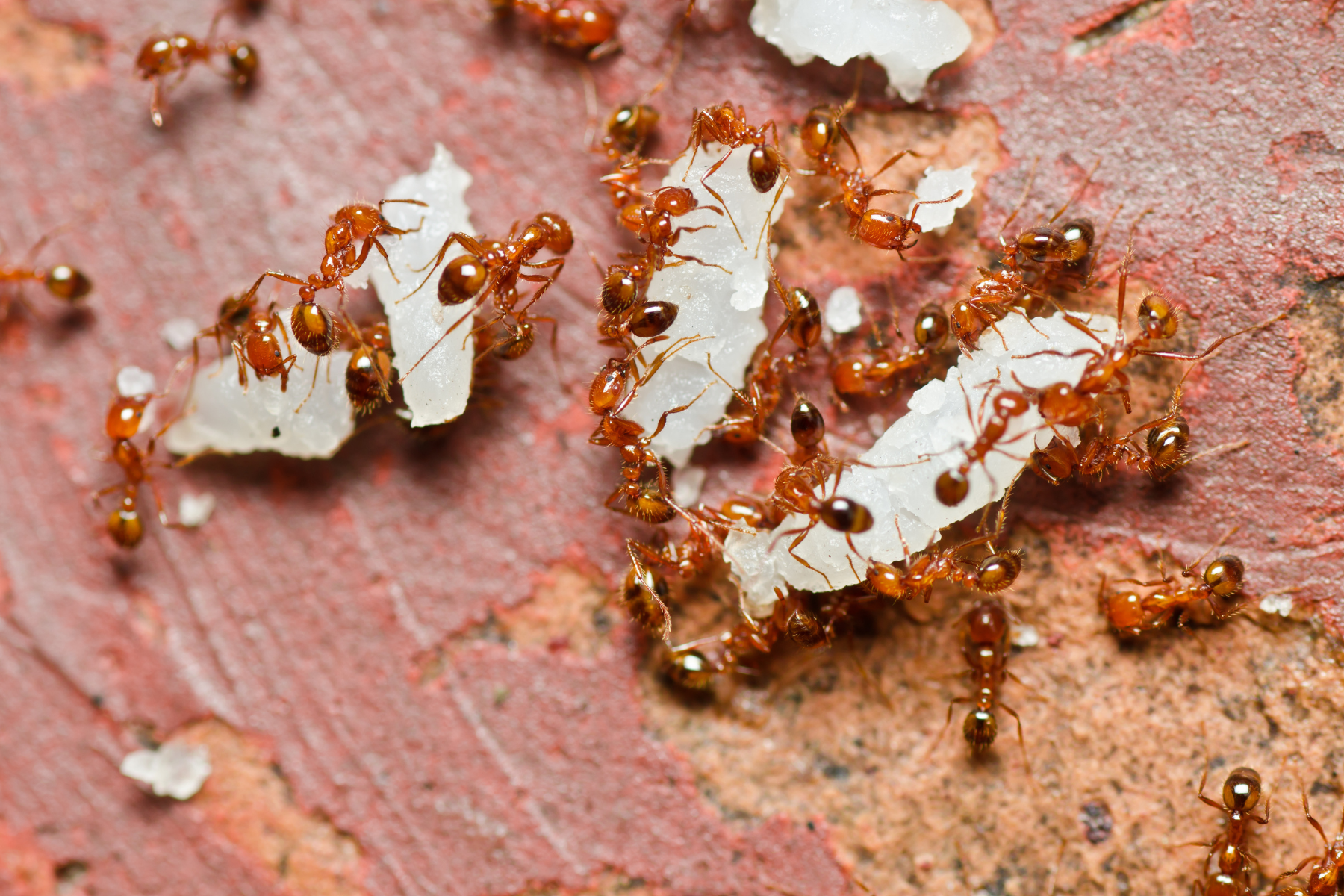Discovering a bed bug infestation can be incredibly distressing. These small insects are notoriously difficult to eradicate. They’re good at hiding and can reproduce rapidly. They quickly re-infest your home even after treatment. The infestation itself is upsetting and uncomfortable for every homeowner like you. It impacts the quality of our sleep, makes us feel anxious, and potentially leads us to other health concerns. The process of eliminating bed bugs can be a bit complicated. It involves multiple treatment steps, careful preparation, and potentially time and expense. In this blog, we will explore the challenges of bed bug infestations, provide a step-by-step guide to effective treatment, and offer practical preventative measures to protect your home.
What are Bed Bugs?

Bed bugs are small, nocturnal, blood sucking insects that feed on human blood. They are masters of concealment, expertly hiding in mattresses, box springs, bedding, furniture crevices, cracks in walls, and even electrical outlets. Their flattened bodies allow them to squeeze into incredibly tight spaces. The bites themselves are often painless initially, but they can cause intense itching and allergic reactions in many people.
Signs of an Infestation
Common indicators of a bed bug problem include:
- Bite Marks: Bed bug bites typically appear as small, red, itchy welts on the skin. Unlike mosquito bites, which are usually single occurrences, bed bug bites often appear in a line or cluster
- Stains: Small blood spots on your sheets, pillowcases, or mattress are a strong indicator of bed bugs. These stains are usually dark reddish-brown and may be accompanied by small smears, indicating the insect’s movement after feeding.
- Excrement: Bed bug feces appear as tiny, dark brown or rusty-colored spots. These spots are often found on mattresses, box springs, bedding, or walls near where bed bugs are hiding.
- Odor: A faint, musty smell might suggest a relatively small number of bed bugs, while a strong, pervasive odor indicates a significant infestation requiring immediate and aggressive treatment.
Preparing for Treatment
Proper preparation is important for effective bed bug eradication. Preparing your home for bed bug treatment is not just a matter of convenience. It’s an essential step that directly impacts the success and efficiency of the treatment. The steps include:
- Decluttering: Remove unnecessary items to reduce hiding spots.
- Laundering: Wash and dry bedding, curtains, and clothing on high heat.
- Vacuuming: Thoroughly vacuum carpets, floors, and furniture. Dispose of the vacuum bag immediately.
- Sealing Items: Place cleaned items in sealed plastic bags to prevent re-infestation.
Treatment Methods
Bed bugs are notoriously difficult to eliminate using over-the-counter methods or home remedies. Professional pest control technicians possess the expertise to conduct thorough inspections and accurately identify bed bugs, distinguishing them from other insects or skin irritations. There are different bugs treatment method:

Chemical Treatments
Pest control professionals may use EPA-approved insecticides to target bed bugs. This method often requires multiple applications and careful monitoring.
Heat Treatments
Heat treatment involves raising the temperature of the affected area to levels lethal to bed bugs (typically around 120°F or 49°C). This method can eliminate all life stages of bed bugs in a single session.
Integrated Pest Management (IPM)
IPM combines multiple strategies, including chemical and non-chemical methods, to manage bed bug infestations effectively. This approach emphasizes monitoring, prevention, and control.
What to Expect Post-Treatment
After treatment, it’s normal to see some bed bug activity for a short period. Continue to monitor for signs of infestation and maintain cleanliness. Follow-up treatments may be necessary, depending on the severity of the infestation.
Real-Life Success Stories
“Bed bugs infested my home for the first time ever! My landlord’s pest control company tried four times to eliminate them, but failed, and my children even suffered headaches from the repeated pesticide treatments. Then, I contacted Spark Pest Control. They were incredibly responsive, gave me a free quote over the phone, and expertly eradicated the infestation using a heat treatment in just 48 hours. It was a significant infestation, affecting two bedrooms and the living room. Two weeks later, we haven’t seen a single bed bug, and my children are no longer suffering from headaches. I highly recommend Spark Pest Control for anyone struggling with a bed bug infestation.” – Jennifer, 35 (a mom of two, living in Gilbert)
Additional Prevention Tips for Re-Infestation
To minimize the risk of future infestations:
- Regular Inspections: Periodically check for signs of bed bugs.
- Caution with Second-Hand Items: Inspect used furniture and clothing before bringing them home.
- Travel Precautions: Examine hotel rooms for signs of bed bugs and keep luggage off the floor.
- Encasements: Use protective covers on mattresses and box springs.
Who You Gonna Call? Spark Pest Control!
We understand bed bugs are a great serious problem at home, but don’t let them win! Our expert pest control technicians can effectively eliminate bed bugs from your home. No more sleepless nights and itchy bites that control your family’s life. Don’t wait until the infestation gets worse. Contact us today for a free inspection and a customized treatment plan to get rid of bed bugs for good. We’re glad to help remove the bugs forever.
Frequently Asked Questions About Bed Bug Treatment Plans
1. How do I know if I really have bed bugs?
Common signs include red, itchy bites (often in a line or cluster), small blood stains on your sheets, tiny black droppings on your mattress, and a musty odor in the room. If you’re unsure, a professional inspection can confirm it.
2. Are bed bug treatments safe for my family and pets?
Yes. Professional treatments are designed to be safe when handled correctly. You’ll need to leave your home during treatment and return only when it’s safe, usually after a few hours.
3. What is the most effective treatment for bed bugs?
Heat treatments are often the most effective because they kill bed bugs at all life stages—including eggs—in one session. Chemical treatments can also work but may require multiple visits.
4. How long does a typical bed bug treatment take?
Most treatments last between 4 to 8 hours, depending on the size of your home and the method used. Your technician will give you a more specific timeframe based on your situation.
5. Do I need to throw away my furniture or mattress?
Not necessarily. Most furniture, including beds and couches, can be treated and saved, especially when heat treatment is used. Your technician will let you know what can be kept.
6. Will bed bugs come back after treatment?
They can if the source isn’t completely eliminated or if re-infestation occurs (e.g., through luggage or guests). That’s why follow-up inspections and prevention tips are key.
7. How should I prepare my home before treatment?
Wash and dry all bedding and clothes on high heat, vacuum thoroughly, declutter rooms, unplug electronics, and follow the prep checklist provided by your pest control team.
8. How soon will I see results after treatment?
Most people notice fewer or no bites within a few days. However, it’s normal to see some activity for a week or two after treatment as residual methods continue to work.
9. What should I do after the treatment is finished?
Avoid deep cleaning for a few days so the treatment remains effective. Monitor the space, inspect mattress covers, and keep clutter to a minimum to prevent future hiding spots.
10. Can I treat bed bugs myself with sprays or DIY methods?
DIY methods rarely solve the problem completely. Bed bugs are incredibly resistant and good at hiding. Professional treatments are more reliable and safer for long-term results.





